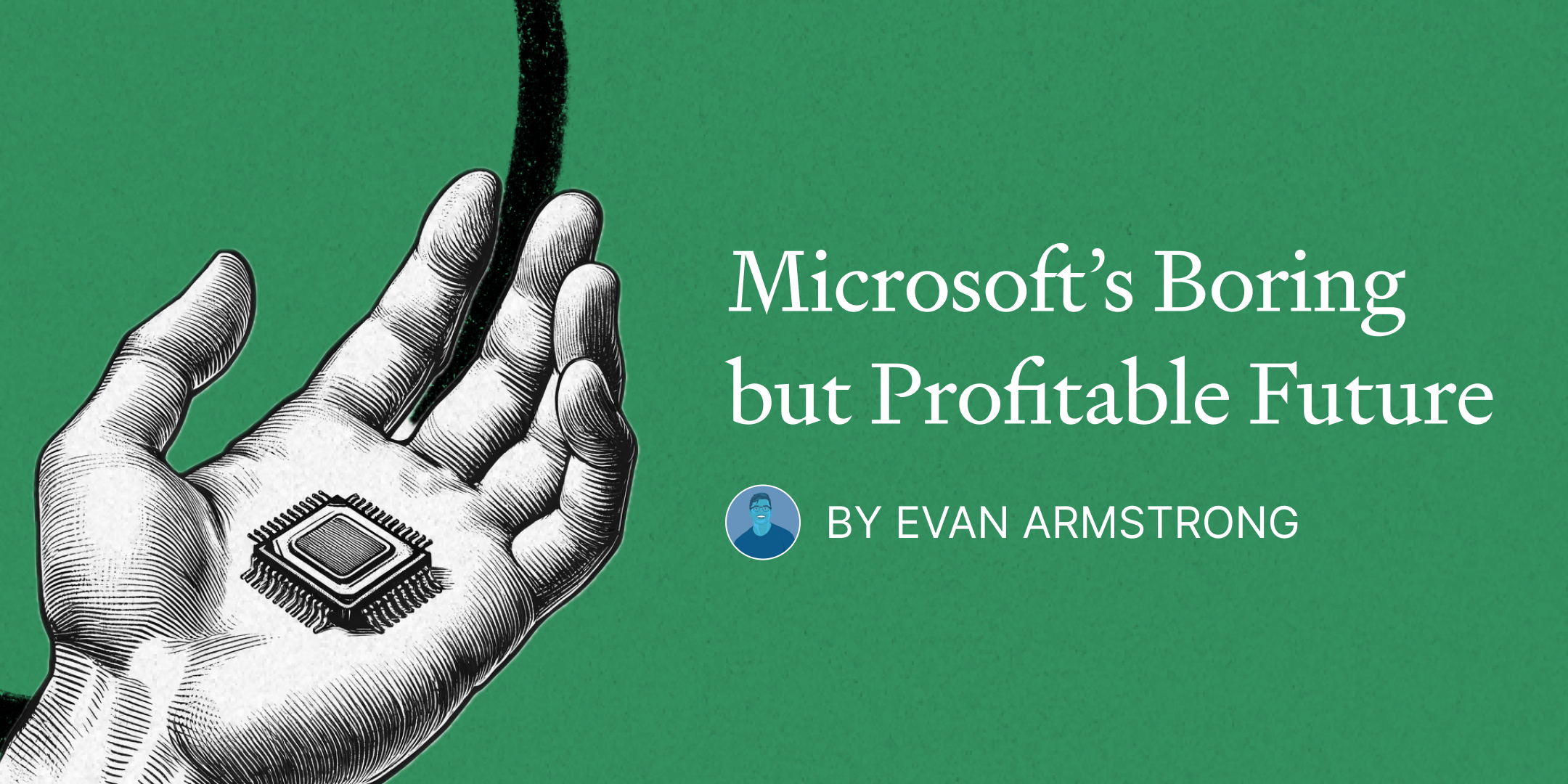Microsoft’s Boring but Profitable Future

🌈 Abstract
The article discusses Microsoft's recent announcements at its Build developer conference, focusing on the company's advancements in AI and its integration into personal computers and enterprise software. It highlights Microsoft's strategy to build an AI-powered "meta-layer" across its operating system, applications, and cloud services, aiming to automate workflows and enhance productivity.
🙋 Q&A
[01] Microsoft's AI Advancements
1. What are the key AI-related products and features announced by Microsoft at the Build conference?
- Microsoft announced "Copilot+ PCs" that incorporate new types of compute and data sources for AI, including Arm-based Qualcomm Snapdragon chips and dedicated neural processing units (NPUs) for efficient AI tasks.
- The company introduced "Recall," a software feature that allows Copilot+ PCs to record and semantically search all user activities on the screen, leveraging AI to find lost files and forgotten conversations.
- Microsoft also announced "Copilot Studio," an AI-powered automation tool that allows knowledge workers to connect data sources and automate repetitive tasks without writing code.
2. How does Microsoft's approach to AI compare to that of other tech giants like Google and OpenAI?
- Microsoft is aiming to build an AI "meta-layer" that integrates across its operating system, applications, and cloud services, similar to the strategies of Google and OpenAI.
- However, Microsoft's approach is centered around its Windows operating system and personal computing devices, leveraging its existing install base and integrations with various software and data sources.
- This contrasts with Google's focus on horizontal software like the Chrome browser and Android, and OpenAI's approach of creating a standalone desktop and mobile app.
3. What are the key advantages of Microsoft's local AI computing capabilities in Copilot+ PCs?
- The Copilot+ PCs have dedicated neural processing units (NPUs) that are more efficient at AI tasks than CPUs or GPUs, allowing for faster and more private AI processing on the device rather than relying on cloud-based systems.
- This local compute power enables AI workflows that would be challenging to do with a cloud-based system, such as the Recall feature that can semantically search all user activities on the device.
[02] Microsoft's Enterprise AI Strategy
1. How is Microsoft integrating AI into its enterprise software and services?
- Microsoft announced Copilot Studio, an AI-powered automation tool that allows knowledge workers to connect data sources and automate repetitive tasks without writing code.
- Copilot Studio is integrated into the Microsoft Power Platform, a suite of business process automation software that has seen significant growth in recent years.
- Microsoft is embedding Copilot-branded AI assistants across its various enterprise applications, with the goal of creating a unified "meta-layer" for AI-powered automation and productivity.
2. How does Microsoft's enterprise AI strategy compare to existing solutions like robotic process automation (RPA)?
- While RPA tools like UiPath have provided similar levels of automation, Microsoft's approach leverages its Azure cloud services, connectivity to various SaaS applications, and the integration of large language models (LLMs) to enable more advanced, natural language-driven automation.
- Microsoft's enterprise AI strategy aims to provide a more comprehensive and integrated solution that can leverage the company's existing software ecosystem and data sources.
3. What are the potential implications of Microsoft's enterprise AI strategy?
- Microsoft's enterprise AI strategy, if successful, could pose an existential threat to standalone RPA providers like UiPath, as it offers a more integrated and powerful automation solution.
- The integration of LLMs and natural language processing across Microsoft's enterprise software could significantly enhance productivity and efficiency for knowledge workers, transforming how they interact with and automate their workflows.